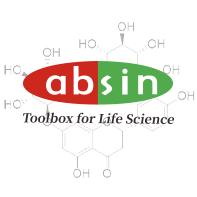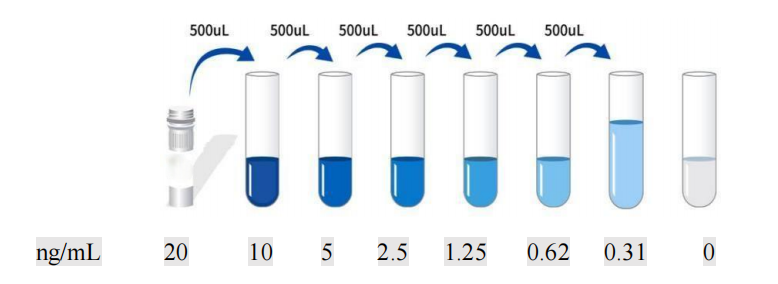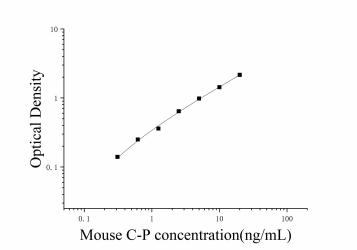Product Details
Product Details
Product Specification
| Usage | I. Sample Handling and Requirements: 1. The detection range of the kit is not equivalent to the concentration range of the analyte in the sample. Before the experiment, it is recommended to estimate the analyte concentration in the sample based on relevant literature and conduct preliminary experiments to determine the actual concentration. If the analyte concentration in the sample is too high or too low, please dilute or concentrate the sample appropriately. 2. If the sample type to be tested is not listed in the instructions, it is recommended to conduct preliminary experiments to verify the validity of the assay. 3. Serum: Collect whole blood in a serum separator tube and incubate at room temperature for 2 hours or at 2-8°C overnight. Then, centrifuge at 1000×g for 20 minutes. The supernatant can be collected or stored at -20°C or -80°C. Avoid repeated freezing and thawing. 4. Plasma: Collect the sample using EDTA or heparin as an anticoagulant. Centrifuge the sample at 1000 × g for 15 minutes at 2-8°C within 30 minutes of collection. The supernatant can be assayed or stored at -20°C or -80°C, but avoid repeated freezing and thawing. 5. Tissue Homogenization: Rinse the tissue with pre-chilled PBS (0.01M, pH 7.4) to remove residual blood (lysed red blood cells in the homogenate may affect test results). Weigh the tissue and mince it. Add the minced tissue to the appropriate volume of PBS (generally a 1:9 weight-to-volume ratio, e.g., 1 g of tissue sample to 9 mL of PBS. The specific volume can be adjusted based on experimental needs and recorded. It is recommended to add protease inhibitors to the PBS) in a glass homogenizer and thoroughly grind on ice or in a homogenizer. To further lyse tissue cells, the homogenate can be sonicated or repeatedly frozen and thawed. Finally, centrifuge the homogenate at 5000×g for 5-10 minutes, and remove the supernatant for analysis. 6. Cell Culture Supernatant: Centrifuge at 1000×g for 20 minutes. Remove the supernatant for analysis, or store at -20°C or -80°C, but avoid repeated freeze-thaw cycles. 7. Cell Lysis Buffer: Gently wash adherent cells with ice-cold PBS, then trypsinize and harvest by centrifugation at 1000×g for 5 minutes. Suspension cells can be harvested directly by centrifugation. Wash the harvested cells three times with ice-cold PBS and resuspend in 150-200 μL of PBS per 1×10^6 cells (it is recommended to add protease inhibitors to the PBS; if the cell count is very low, reduce the PBS volume appropriately). Disrupt the cells by repeated freeze-thaw cycles or sonication. Centrifuge the extract at 1500×g for 10 minutes at 2-8°C, and remove the supernatant for analysis. 8. Other Biological Samples: Centrifuge at 1000×g for 20 minutes, remove the supernatant, and proceed to testing. 9. Sample Appearance: Samples should be clear and transparent, and suspended matter should be removed by centrifugation. 10. Sample Storage: Samples collected for testing within one week can be stored at 4°C. If testing cannot be performed promptly, aliquot the sample into single-use portions and freeze at -20°C (for testing within one month) or -80°C (for testing within six months). Avoid repeated freeze-thaw cycles. Hemolysis of the sample can affect the final test results, so hemolyzed samples are not suitable for this test. 2. Sample Dilution Protocol: Please estimate the sample concentration range in advance. If your test sample requires dilution, the following dilution protocol is recommended: 100-fold dilution: One-step dilution. Add 5uL of sample to 495uL of universal diluent for a 100-fold dilution. To dilute 1000-fold: perform a two-step dilution. Add 5uL of sample to 95uL of universal diluent for a 20-fold dilution. Then, add 5uL of the 20-fold diluted sample to 245uL of universal diluent for a 50-fold dilution, for a total of 1000-fold dilution. To dilute 100,000-fold: perform a three-step dilution. Add 5µL of sample to 195µL of universal diluent and dilute 40-fold. Then, add 5µL of the 40-fold diluted sample to 245µL of universal diluent and dilute 50-fold. Finally, add 5µL of the 2000-fold diluted sample to 245µL of universal diluent and dilute 50-fold, for a total dilution of 100,000-fold. For each dilution step, add at least 3µL of sample, and the dilution factor should not exceed 100-fold. Mix thoroughly at each dilution step to avoid foaming. III. Equipment required for the experiment: 1. Microplate reader (450nm) 2. High-precision pipettes and tips: 0.5-10uL, 5-50uL, 20-200uL, 200-1000uL 3. 37°C constant temperature box 4. Distilled or deionized water IV. Preparation before testing: 1. Please take out the test kit from the refrigerator 10 minutes in advance and equilibrate it to room temperature. 2. Preparation of Gradient Standard Working Solution: Add 1 mL of Universal Diluent to the lyophilized standard. Let stand for 15 minutes to completely dissolve, then gently mix (concentration 20 ng/mL). Then dilute to the following concentrations: 20 ng/mL, 10 ng/mL, 5 ng/mL, 2.5 ng/mL, 1.25 ng/mL, 0.62 ng/mL, 0.31 ng/mL, and 0 ng/mL. Serial Dilution Method: Take seven EP tubes and add 500 μL of Universal Diluent to each tube. Pipette 500 μL of the 20 ng/mL standard working solution into the first EP tube and mix thoroughly to make a 10 ng/mL standard working solution. Repeat this procedure for subsequent tubes. The last tube serves as a blank well; there is no need to pipette liquid from the penultimate tube. See the figure below for details.
3. Preparation of biotinylated detection antibody working solution: 15 minutes before use, centrifuge the concentrated biotinylated antibody at 1000×g for 1 minute. Dilute the 100× concentrated biotinylated antibody to a 1× working concentration with universal diluent (e.g., 10uL concentrate + 990uL 4. Preparation of enzyme conjugate working solution: 15 minutes before use, centrifuge 100 μL of concentrated enzyme conjugate at 1000 × g for 1 minute. Dilute 100 μL of concentrated HRP enzyme conjugate with universal diluent to a 1 × working concentration (e.g., 10 μL concentrate + 990 μL universal diluent). Prepare and use immediately. 5. Preparation of 1× Wash Buffer: Dissolve 10 mL of 20× Wash Buffer in 190 mL of distilled water. (Concentrated Wash Buffer removed from the refrigerator may crystallize; this is normal. Allow to stand at room temperature until the crystals have completely dissolved before preparing the solution.) V. Procedure: 1. Remove the desired strips from the aluminum foil bag after equilibration at room temperature for 10 minutes. Seal the remaining strips in a ziplock bag and return them to 4°C. 2. Sample Addition: Add 100 μL of sample or standard of varying concentrations to the corresponding wells. Add 100 μL of Universal Diluent to the blank wells. Cover with film and incubate at 37°C for 60 minutes. (Recommendation: Dilute the sample to be tested at least 1-fold with universal diluent before adding it to the ELISA plate for testing. This will minimize the impact of matrix effects on the test results. The sample concentration should be multiplied by the corresponding dilution factor when calculating the final sample concentration. It is recommended to run replicates for all samples and standards.) 3. Adding Biotinylated Antibody: Remove the ELISA plate and discard the liquid. Do not wash. Add 100 μL of Biotinylated Antibody Working Solution directly to each well. Cover with a film sealer and incubate at 37°C for 60 minutes. 4. Washing: Discard the liquid. Add 300 μL of 1x Wash Solution to each well. Let stand for 1 minute. Shake off the wash solution and pat dry on absorbent paper. Repeat this process three times (a plate washer can also be used). 5. Adding Enzyme Conjugate Working Solution: Add 100 μL of Enzyme Conjugate Working Solution to each well. Cover with a film sealer and incubate at 37°C for 30 minutes. 6. Wash: Discard the liquid and wash the plate five times as in step 4. 7. Add substrate: Add 90 μL of substrate (TMB) to each well, cover with a film sealer, and incubate at 37°C in the dark for 15 minutes. 8. Add stop solution: Remove the ELISA plate and add 50 μL of stop solution directly to each well. Immediately measure the OD value of each well at 450 nm. VI. Calculation of experimental results: 1. Calculate the average OD value of the standard and sample replicates and subtract the OD value of the blank well as the correction value. Plot the standard curve for the four-parameter logistic function on double-logarithmic graph paper, using concentration as the horizontal axis and OD value as the vertical axis.
VII. Kit Performance:
8. Problem analysis:
|
|||||||||||||||||||||||||||||||||||||||||||||||||||||||||||||||||||||||||||||||||||||||||||||||||||
| Theory | This kit uses a double-antibody sandwich enzyme-linked immunosorbent assay (ELISA). Sample, standard, biotin-labeled detection antibody, and HRP conjugate are sequentially added to microwells pre-coated with mouse C-peptide (CP) capture antibody. After incubation and washing, the sample is developed using the substrate TMB. TMB converts to blue under the catalysis of HRP and to yellow under the action of acid. The intensity of the color is positively correlated with the amount of mouse C-peptide (CP) in the sample. The absorbance (OD) is measured at 450 nm using a microplate reader to calculate the sample concentration. | |||||||||||||||||||||||||||||||||||||||||||||||||||||||||||||||||||||||||||||||||||||||||||||||||||
| Source | Mouse | |||||||||||||||||||||||||||||||||||||||||||||||||||||||||||||||||||||||||||||||||||||||||||||||||||
| Synonym | Mouse C-Peptide ELISA Kit | |||||||||||||||||||||||||||||||||||||||||||||||||||||||||||||||||||||||||||||||||||||||||||||||||||
| Detection Type | Double antibody sandwich method | |||||||||||||||||||||||||||||||||||||||||||||||||||||||||||||||||||||||||||||||||||||||||||||||||||
| Description | C-peptide (CP) is a short, 31-amino acid polypeptide that connects the A and B chains of the insulin molecule. In the setting of diabetes or hypoglycemia, measuring serum levels of C-peptide can be used to differentiate between conditions with similar clinical features. The first documented use of a C-peptide test was in 1972. However, over the past decade, C-peptide has been discovered to be a bioactive peptide in its own right, with effects on microvascular blood flow and tissue health. C-peptide has been shown to bind to the surface of several cell types, such as neurons, endothelial cells, fibroblasts, and renal tubules. |
|||||||||||||||||||||||||||||||||||||||||||||||||||||||||||||||||||||||||||||||||||||||||||||||||||
| Composition |
|
|||||||||||||||||||||||||||||||||||||||||||||||||||||||||||||||||||||||||||||||||||||||||||||||||||
| General Notes | 1. Strictly adhere to the specified incubation time and temperature to ensure accurate results. All reagents must be at room temperature (20-25°C) before use. Refrigerate reagents immediately after use. 2. Improper plate washing may result in inaccurate results. Ensure that all liquid in the wells is aspirated thoroughly before adding substrate. Do not allow the wells to dry out excessively during the entire process. 3. Clean the bottom of the plate of any residual liquid and fingerprints, as this may affect the OD value. 4. The substrate developer solution should be colorless; substrate solution that has turned blue should not be used. 5. Avoid cross-contamination of reagents and samples to prevent erroneous results. 6. Avoid direct exposure to strong light during storage and incubation. 7. Do not expose any reagents to bleaching agents or the strong fumes emitted by bleaching agents. Any bleaching agent will destroy the biological activity of the reagents in the kit. 8. Do not use expired products, and do not mix components from different product numbers and batches. 9. Recombinant proteins from sources other than the kit may not be compatible with the antibodies in this kit and will not be recognized. 10. If there is a possibility of disease transmission, all samples should be managed properly and the samples and testing devices should be handled according to the prescribed procedures. |
|||||||||||||||||||||||||||||||||||||||||||||||||||||||||||||||||||||||||||||||||||||||||||||||||||
| Storage Temp. | Store at 2-8°C. | |||||||||||||||||||||||||||||||||||||||||||||||||||||||||||||||||||||||||||||||||||||||||||||||||||
| Test Range | 0.31-20 ng/mL |




